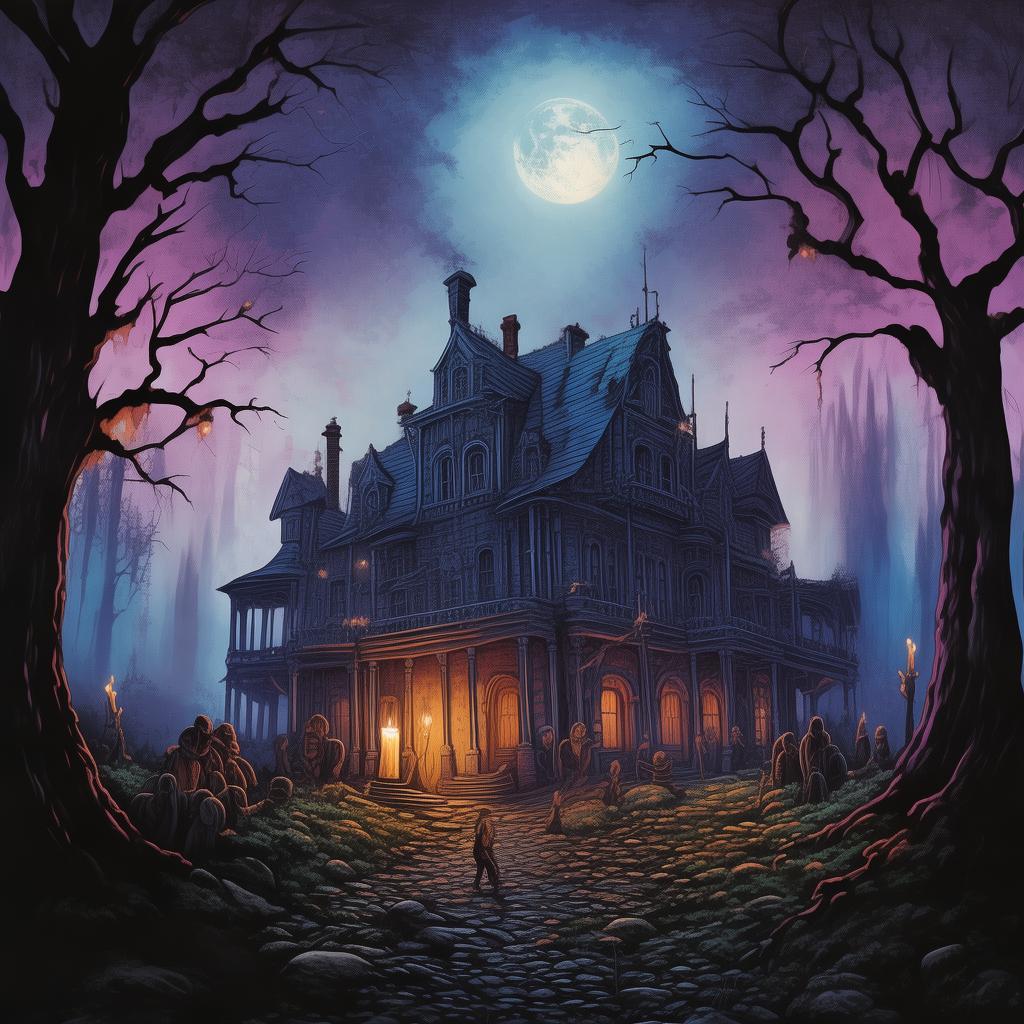The Bhutanese Ghosts' Reincarnation
In the shadowy corners of Thimphu, the capital of Bhutan, lived a young woman named Tshering. Her life was a tapestry of tradition and modernity, a blend of the vibrant markets and the serene monasteries that peppered the landscape. Yet, beneath the surface of her seemingly normal life, Tshering harbored a haunting secret. It was a secret passed down through generations, one that whispered of ghosts and reincarnation, and it had recently begun to stir in her dreams.
The story of her ancestor, Pema, was a legend among the locals. Pema had been a lama, a spiritual leader revered for his wisdom, until a tragic betrayal. He had been accused of heresy and was thrown into the deepest, darkest cell of the dzong, the fortress-monastery that dominated the skyline of Thimphu. As the years passed, Pema’s spirit was said to have become trapped in the dzong, his presence so potent that no one dared to venture inside after dusk.
Tshering’s dreams were vivid, almost as if she were revisiting the dzong. She saw Pema, his eyes filled with sorrow and a profound sadness. In her dreams, she felt his presence, a cool breeze that seemed to brush against her skin. Each night, the dreams grew more insistent, until one fateful evening, Tshering found herself standing at the dzong’s entrance, her heart pounding with a mix of fear and curiosity.
The dzong loomed before her, its stone walls weathered by time and the relentless mountain winds. As she stepped inside, the air grew colder, and the scent of incense mingled with the earthy smell of the ancient stones. Her flashlight flickered, casting eerie shadows across the corridors. She knew she was treading on forbidden ground, yet the pull was irresistible.
In the depths of the dzong, Tshering found a room that was a mausoleum to Pema. The walls were adorned with intricate murals of the Buddha, but the centerpiece was a simple wooden box, covered in dust and cobwebs. With trembling hands, she opened the box and inside found an amulet, intricately carved with symbols of protection and the promise of rebirth.
The amulet, it seemed, was the key to Pema’s restless spirit. According to the legends, it held the power to either release him from his eternal imprisonment or bind him to Tshering’s bloodline, ensuring that his descendants would face a similar fate. With the amulet in her possession, Tshering realized that she had become the linchpin in a timeless struggle between good and evil, between the living and the dead.
The news of her discovery spread like wildfire through the village. Some believed she was a cursed soul, destined to be haunted by the spirits of her ancestors. Others saw her as a vessel of destiny, one who could either save or seal the fate of Pema and his people. Tshering found herself at the center of a storm, her every move scrutinized by the eyes of the village and the silent watch of Pema’s spirit.
As the days passed, Tshering’s dreams became more intense, and the presence of the dzong seemed to grow more insistent. She knew she had to make a decision. With the amulet, she could attempt to perform a sacred ritual to release Pema, but doing so would put her life at risk, and she couldn’t guarantee the outcome.
The climax of her journey came when Tshering, in a moment of despair, found herself at the dzong’s highest point, overlooking the entire city. She was surrounded by the ancient lamas, who had been summoned to help her. They explained that the ritual required not just her life force, but the purity of her soul.

The ritual was arduous and filled with symbolic acts of atonement. As Tshering performed the final steps, she felt a strange sensation, as if her very essence was being torn apart. In that moment, she realized the true power of the amulet and the connection between her and Pema.
The lamas chanted in unison, and as the last words were spoken, Tshering felt a rush of energy course through her. The spirit of Pema emerged from the dzong, his eyes meeting Tshering’s for the first time in centuries. There was a moment of intense connection, and then he faded into the twilight, leaving Tshering with a sense of peace.
In the days that followed, Tshering felt the weight of her burden lift. The dreams stopped, and the dzong seemed to revert to its peaceful, forgotten state. The village had been transformed; there was a new sense of harmony, as if the spirit of Pema had brought balance to their world.
The ending of Tshering’s tale became a cautionary tale and a testament to the power of redemption. It spread throughout Bhutan, inspiring people to seek understanding and forgiveness rather than fear and anger. And in the heart of Thimphu, the dzong stood as a reminder of the delicate balance between the living and the dead, a place where the past and the future would always meet.
✨ Original Statement ✨
All articles published on this website (including but not limited to text, images, videos, and other content) are original or authorized for reposting and are protected by relevant laws. Without the explicit written permission of this website, no individual or organization may copy, modify, repost, or use the content for commercial purposes.
If you need to quote or cooperate, please contact this site for authorization. We reserve the right to pursue legal responsibility for any unauthorized use.
Hereby declared.









